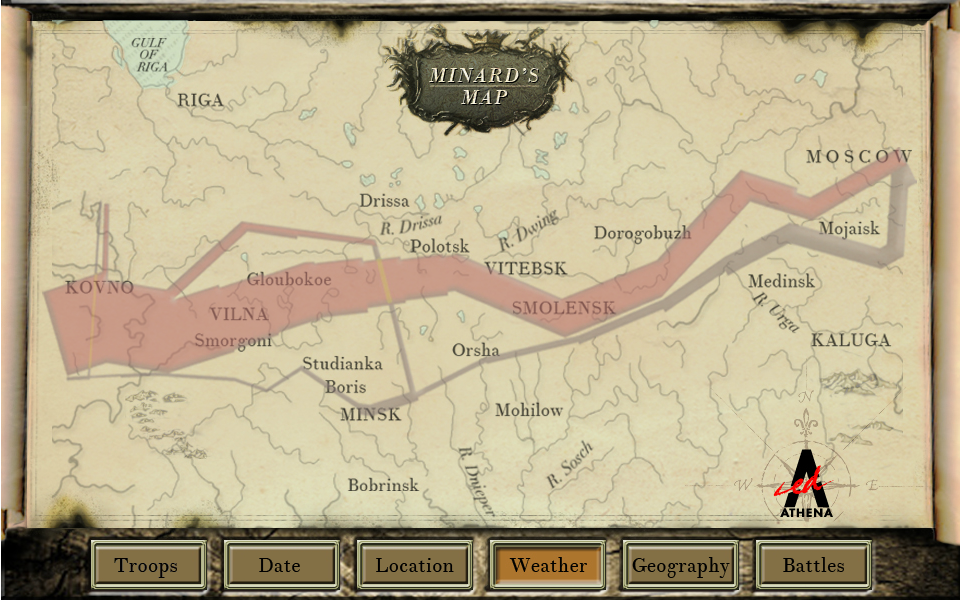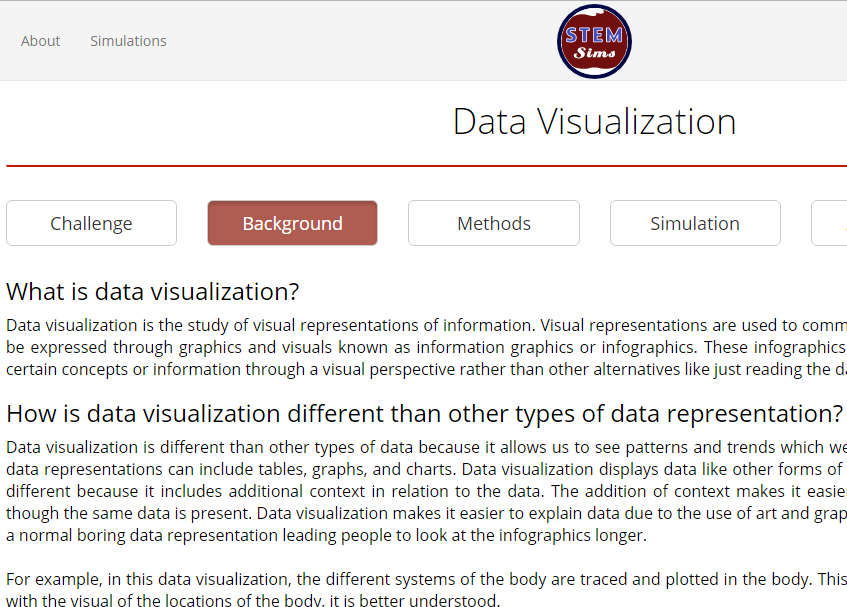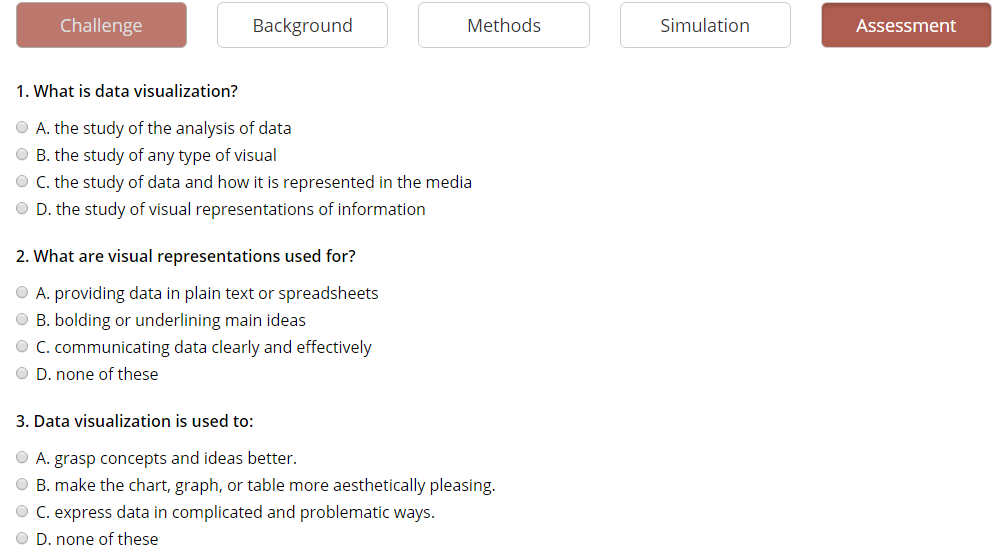STEM Sims: Data Visualization
By Edwin P. Christmann
Posted on 2017-09-22
Introduction
STEM Sims provides over 100 simulations of laboratory experiments and engineering design products for applications in STEM classrooms. One particular simulation found on this site, Data Visualization, is a stimulating and imaginative tool for students to analyze a graphic representation of Napoleon’s 19th Century invasion of Russia. Hence, students use data provided with an 1889 graphic representation drawn by Charles Minard. The drawing is detailed and gives a variety of information about the military campaign. Subsequently, students are able to imagine they are military historians investigating and making inferences to analyze the success or the campaign. As is the case with all STEM SIMs software, Data Visualization is aligned with national (NGSS) standards (see below) and is compatible with state standards as well:
• MS-PS4.C – Information Technologies and Instrumentation
• MS-ESS2.D – Weather and Climate


The simulation provides students with a brochure (see link below), a pre-assessment quiz, as well as introductory information about the concepts of Data Visualization. The simulation provides students with valuable data analysis skills; which offer an excellent content map that integrates mathematics, science, and social studies very well. Moreover, the activity challenges students to solve the problems of how and why the campaign failed, making it both engaging for students and stresses the higher levels of Bloom’s Taxonomy, e.g., Analysis and Evaluation.
Brochure: https://stemsims.com/simulations/data-visualization/brochure/brochure.pdf?version=2017-01-10

STEM Sims provides four separate lesson plans for this simulation (see links below) and provides an excellent learning opportunity for students while minimizing the planning needed by teachers:
Lesson 1: https://stemsims.com/simulations/data-visualization/lessons/lesson-1.pdf?version=2017-01-10
Lesson 2: https://stemsims.com/simulations/data-visualization/lessons/lesson-2.pdf?version=2017-01-10
Lesson 3: https://stemsims.com/simulations/data-visualization/lessons/lesson-3.pdf?version=2017-01-10
Lesson 4: https://stemsims.com/simulations/data-visualization/lessons/lesson-4.pdf?version=2017-01-10
Conclusion
Data Visualization, much like the other simulations on this site, gives students the opportunity to learn authentic and integrated STEM concepts. Moreover, this simulation provides science teachers with a valuable opportunity to work across the curriculum with other subjects. Therefore, science teachers will have the opportunity to work with other teachers and make more diverse connections with their science students. Consider signing-up for a free trial to evaluate this excellent simulation for your classroom and try to determine where this simulation fits into your instructional planning.
For a free trial, visit https://stemsims.com/account/sign-up
Recommended System Qualifications:
• Operating system: Windows XP or Mac OS X 10.7
• Browser: Chrome 40, Firefox 35, Internet Explorer 11, or Safari 7
• Java 7, Flash Player 13
Single classroom subscription: $169 for a 365-day subscription and includes access for 30 students and 100 simulations.
Product Site: https://stemsims.com/
Edwin P. Christmann is a professor and chairman of the secondary education department and graduate coordinator of the mathematics and science teaching program at Slippery Rock University in Slippery Rock, Pennsylvania. Anthony Balos is a graduate student and a research assistant in the secondary education program at Slippery Rock University in Slippery Rock, Pennsylvania
Disclaimer: The views expressed in this blog post are those of the author(s) and do not necessarily reflect the official position of the National Science Teaching Association (NSTA).

